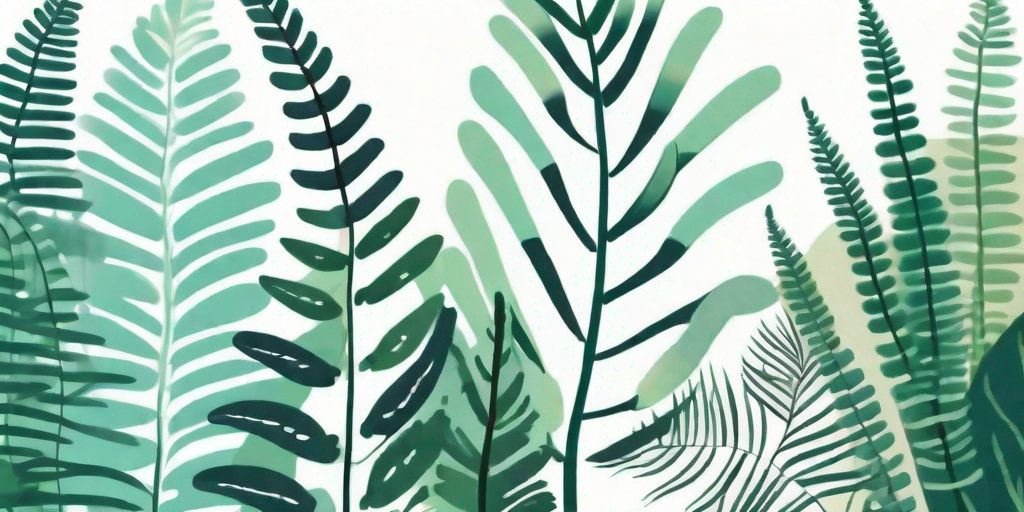
Welcome to the world of button ferns, a place where the greenery is lush, the care is minimal, and the beauty is limitless. If you've been searching for that perfect plant to add a touch of elegance to your garden, you've come to the right place. Button ferns, with their delicate, round leaves and hardy nature, are the perfect addition to any garden, whether you're a seasoned green thumb or a novice looking to dip your toes in the world of gardening. So, buckle up, because we're about to embark on a journey into the world of button ferns that will leave you itching to get your hands dirty.
The Basics of Button Ferns
Before we dive into the nitty-gritty of button fern care, let's take a moment to appreciate the beauty of these plants. Button ferns, or Pellaea rotundifolia, are native to New Zealand and are known for their round, button-like leaves that grow along a central stem. They're a type of fern, but unlike their frilly cousins, button ferns have a sleek, modern look that can complement any garden design.
Button ferns are also incredibly hardy plants. They can tolerate a range of conditions, from bright indirect light to lower light levels, and they're not too picky about their soil either. This makes them an excellent choice for beginners or those who don't have the time to fuss over their plants.
Where to Plant
While button ferns are quite adaptable, they do have a few preferences when it comes to their location. They prefer bright, indirect light, so a spot near a north or east-facing window would be ideal. However, they can also tolerate lower light levels, so don't worry if your perfect spot isn't quite as bright as you'd like.
Button ferns also prefer well-draining soil, so make sure to choose a pot with drainage holes and use a potting mix designed for ferns. If you're planting your button fern in the ground, try to choose a spot that doesn't get waterlogged.
Watering and Feeding
When it comes to watering your button fern, less is more. These plants prefer their soil to dry out slightly between waterings, so make sure to check the moisture level before you reach for the watering can. Overwatering can lead to root rot, which is a surefire way to turn your beautiful button fern into a soggy mess.
As for feeding, button ferns aren't heavy feeders. A monthly dose of a balanced, water-soluble fertilizer during the growing season (spring and summer) should be more than enough to keep your fern happy and healthy.
Common Problems and Solutions
Like all plants, button ferns can encounter a few problems. But don't worry, with a little know-how, you'll be able to tackle these issues head-on.
One common problem is yellowing leaves. This is often a sign of overwatering, so if you notice your fern's leaves turning yellow, check the moisture level of the soil. If it's too wet, cut back on watering and make sure your fern is in a well-draining pot.
Brown Tips
Brown tips on your fern's leaves can be a sign of low humidity. Button ferns prefer a humid environment, so if your home is on the dry side, you might want to consider using a humidifier or placing your fern on a tray of pebbles with water to increase the humidity levels.
Another cause of brown tips could be a lack of nutrients. If you haven't been feeding your fern regularly, it might be time to start. Remember, a balanced, water-soluble fertilizer once a month during the growing season should do the trick.
Pests
Button ferns can occasionally be bothered by pests like aphids, mealybugs, and spider mites. If you notice any unusual spots or webbing on your fern, take a closer look. If you spot any pests, you can usually get rid of them with a gentle spray of water or an insecticidal soap.
Remember, the best defense against pests is a healthy plant, so make sure to keep up with your fern's basic care requirements.
FAQs
- Are button ferns toxic to pets?
No, button ferns are non-toxic to both cats and dogs. However, it's always a good idea to keep plants out of reach of curious pets.
- Can I propagate my button fern?
Yes, button ferns can be propagated by division. Simply divide the plant into smaller sections, making sure each section has a good amount of roots, and plant each section in its own pot.
- How often should I repot my button fern?
Button ferns generally only need to be repotted every 2-3 years, or when they become root-bound.
Unleashing the Beauty of Your Garden
Now that you're armed with all the knowledge you need to care for a button fern, it's time to get planting. Whether you're adding to an already lush garden or starting from scratch, a button fern is a fantastic choice.
With their unique, button-like leaves and hardy nature, these ferns are sure to add a touch of elegance to any garden. So go ahead, unleash the beauty of your garden with a button fern. You won't regret it.















